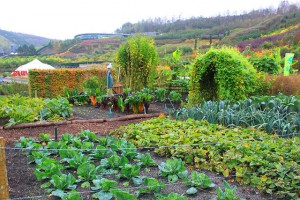Increasing natural areas in agricultural land helps conserve biodiversity
As the human population continues to expand, biologists are looking for new ways to conserve biodiversity in an anthropogenic landscape. A recent study published in the Proceedings of the Royal Society Biology found that reducing pesticide and fertilizer applications and increasing semi-natural landscapes surrounding farms are important techniques for conserving biodiversity. The authors quantitatively reviewed studies that compared management strategies on farms and the complexity of the landscape surrounding farms on the number of plant and animal species and the abundance of those species. They found that low-intensity farms using fewer pesticides and fertilizers were beneficial to plants and invertebrates, experiencing 92 percent more plants and 21 percent more invertebrates than on high-intensity farms. The number of vertebrate species did not differ significantly, but did increase with landscape complexity. By reducing the intensity of farming and by planning for natural areas around farms, agricultural landscapes can play an important role in conserving biodiversity.


